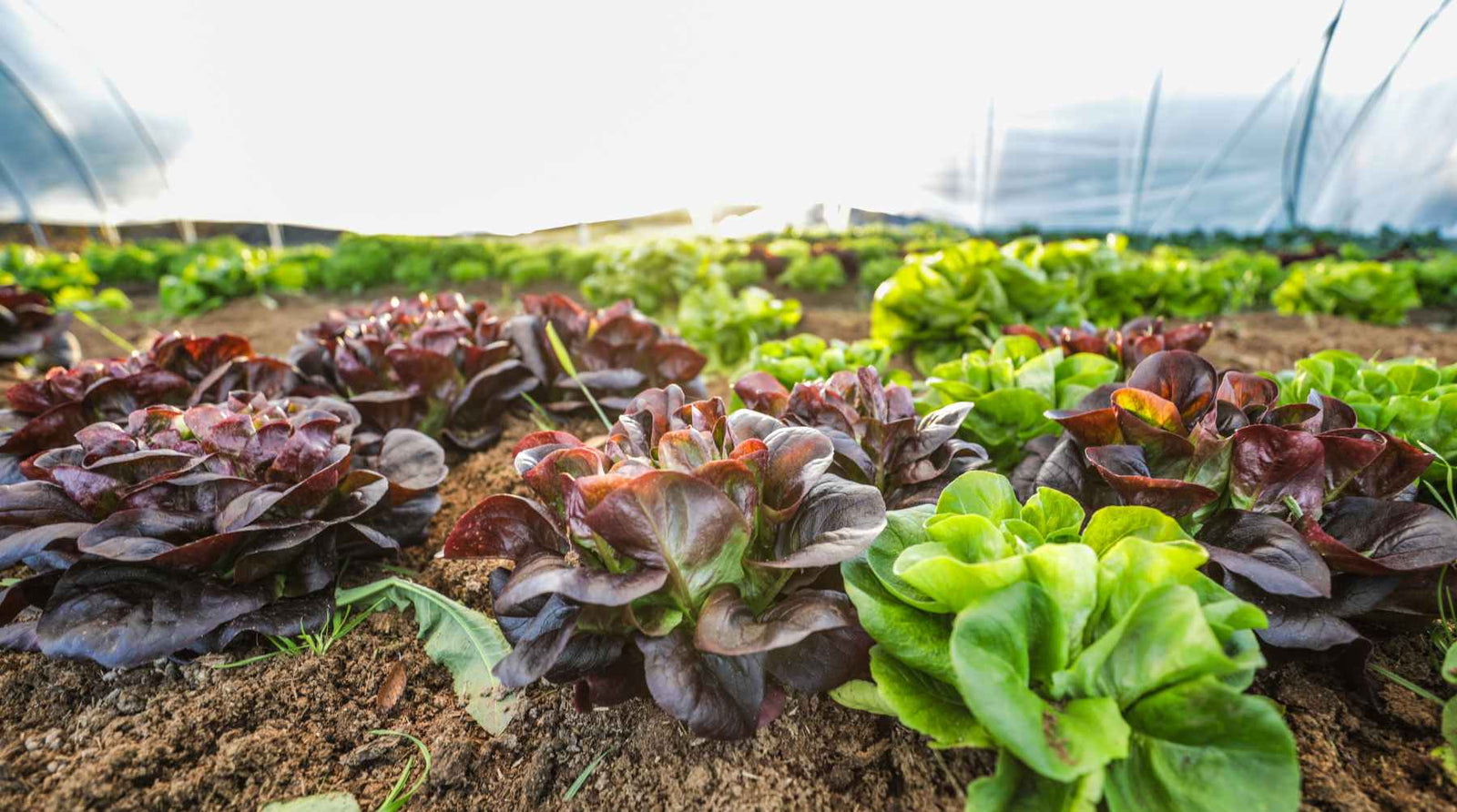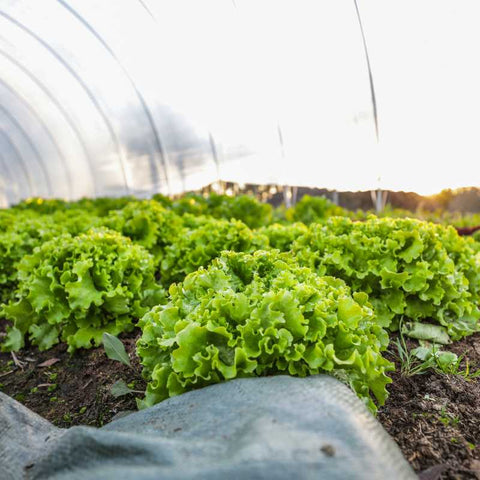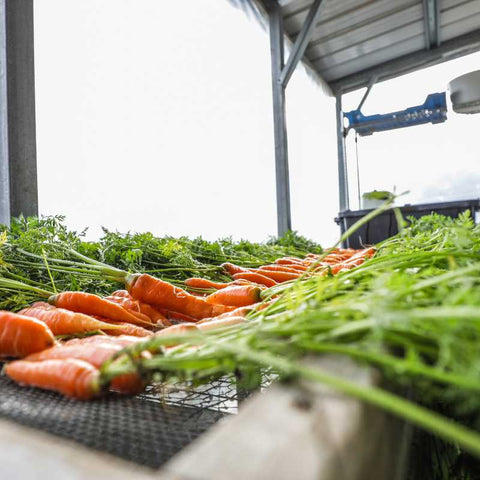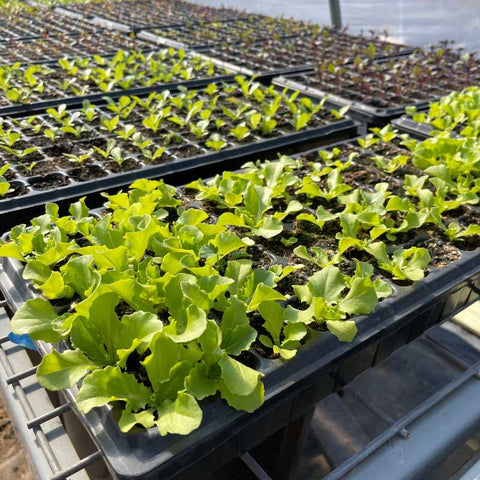20% Off USA-Made All-Metal Greenhouse Kits until May 31
20% Off USA-Made All-Metal Greenhouse Kits until May 31
Succession Planting for Success in the Market Garden
February 22, 2024 5 min read 0 Comments

Succeed with Succession Planting
While farming, growing mainly lettuce and other salad greens, I learned a lot about timing and planning ahead for future weekly harvests. While it almost never works out perfectly, setting up a plan for succession planting is vitally important to a farm's success.
General Succession Planting
One of the hardest things for new and even experienced farmers to figure out is succession planting. It can be defined in many ways, but in general, succession planting is the sowing of a particular crop over and over throughout the season in a particularly timed sequence. Succession planting is usually used for quick-growing crops like beets, radishes, and especially greens such as lettuce, arugula, and mizuna.

Planning Your Next Harvest
At a glance, a new farmer might realize as they harvest a crop, they need to have another one ready to harvest next week, but it gets a little complicated after the next week. You have to have an open area to plant in, and as a small-scale farmer, we do not like open spaces because we are trying to maximize every inch for the highest amount of profit. This is where having a proper succession plan comes into effect.
Different Types of Succession Plans
I have seen everything from a simple piece of paper posted on a refrigerator to an advanced, year-long, color-coordinated spreadsheet and everything in between. Again, like everything else in farming, you must decide what works best for your farm.
Amount of Planting Space
When planning succession plantings, I take three things into account before I start. The first one is the amount of space I am going to dedicate to a certain crop. If I have two fifty-foot beds I want to dedicate to lettuce for the upcoming season, then I need to break that down into successions, which leads to the 2nd part of succession planting, DTM (date to maturity).
Date to Maturity (DTM)
DTM is simply how long it takes to go from planting or transplanting to harvest? This can be tricky due to seasons changing and the length of sunlight hours in a given day. The more sunlight hours a day, the faster the lettuce grows. For this example, we will say it's early summer, and the sunlight hours are at almost a maximum, which means lettuce will be ready to harvest 4 weeks after transplanting.
For a longer-growing crop like carrots, succession planting can be adjusted based on the DTM of the different varieties. Planting early and late season carrots at the same time will give a long harvest window.

Related: GROWING CARROTS IN SUCCESSIONS FOR FARMERS’ MARKETS
How Much Am I Harvesting
Finally, the last consideration is how much I want to sell each week? For this instance, I think I will sell 150 heads of lettuce a week, using my 8-inch spacing and 4 rows to a bed that equals 25 feet of bed space. So that represents half of one 50-foot bed. Week 1, I would transplant 150 heads of lettuce, then next week, I would plant the other half of my first 50-foot bed, followed by the 3rd week in half of the 2nd bed, and finally, the last week would be in the last half of the 2nd bed. If all goes well I should have 150 heads of lettuce every week to harvest for the next 4 weeks.
Succession planting in 50-foot beds
|
First 50-foot Bed |
Second 50-foot Bed |
|
25-row feet Week 1–Feb 5th LETTUCE |
25-row feet Week 2–Feb 12 LETTUCE |
|
25-row feet Week 3–Feb 19 LETTUCE |
25-row feet Week 4–Feb 26th LETTUCE (plant radishes when I plant week 1 lettuce) |
Optimizing Growing Space for Profit
One thing to maximize space would be to plant a very quick-growing crop such as radishes in the 2nd half of the 2nd bed. Since radishes are around a 21-24 day crop there would be time to plant and harvest them in time before you had to transplant the lettuce. Doing this optimizes space and profitability. Due to weather it may not always work out, so it is definitely something experience will help you to plan.

Starting transplants for succession planting
Now that we have it on paper, let's discuss a little bit of the pragmatics. Since lettuce and salad greens are probably the most important crop to a market gardener we will use these as an example. I always plant my lettuce plugs with the expectation to be transplanted between 28-32 days, any older and I tend to lose the outer, bigger leaves, and they don't do as well as a smaller transplant would.

I use 72-cell air prune trays for all of my starts. They are big enough to get good-sized transplants and compact enough that I can fit all the transplants I need for a week on a single 4’ shelf in my seed starting space.
Long Season Vegetable Succession
Another type of succession planting to consider is the 2nd season vegetables. This is not quite as detailed but does need to be planned out. Many other growers and I plant two successions of tomatoes a year. I do this because of our extreme heat; many of my tomatoes die or get extremely stunted in 110-degree heat during July and August. So, I try to plant another round of tomatoes around July 4th.
Planting a second succession of tomatoes allows them to grow during the heat and then start producing about the time the heat subsides, moving into the Fall. Since I grow primarily inside Bootstrap Farmer's high tunnels, I am usually able to push my tomato growing season into December. Tomatoes are just an example of a vegetable I would plant twice in one year; others might include peppers or eggplant during the summer and broccoli or kale during the winter season.
For these transplants that benefit from being larger when they go in the ground, I use the 3.3-inch pots from my market gardener seed starting bundle for up potting before I transplant them out.

Find the succession style that works for your farm
There is a lot of information and pictures online of succession planting schedules that can help you set up a starting plan. Some farmers live and breathe using these schedules, others, me included, only use it as a future guide that changes and evolves as the season moves on. As you always hear in farming, “It has to fit in the context of YOUR farm.”
Written by: Michael Bell, Dallas 1/2 Acre Farm.
Subscribe
Sign up to get the latest on sales, new releases and more …
